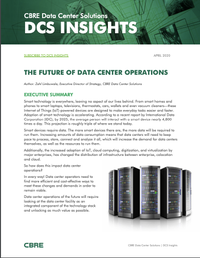Smart technology is everywhere, leaving no aspect of our lives behind. From smart homes and phones to smart laptops, televisions, thermostats, cars, wallets and even vacuum cleaners—these Internet of Things (IoT)-powered devices are designed to make everyday tasks easier and faster. Adoption of smart technology is accelerating. According to a recent report by International Data Corporation (IDC), by 2025, the average person will interact with a smart device nearly 4,800 times a day. This projection is roughly triple of where we stand today.
Smart devices require data. The more smart devices there are, the more data will be required to run them. Increasing amounts of data consumption means that data centers will need to keep pace to process, store, connect and analyze it all, which will increase the demand for data centers themselves, as well as the resources to run them.
Additionally, the increased adoption of IoT, cloud computing, digitization, and virtualization by major enterprises, has changed the distribution of infrastructure between enterprise, colocation and cloud.
So how does this impact data center operations? In every way. Data center operators need to find more efficient and cost-effective ways to meet these changes and demands in order to remain viable. Data center operations of the future will require looking at the data center facility as an integrated component of the technology stack and unlocking as much value as possible.

